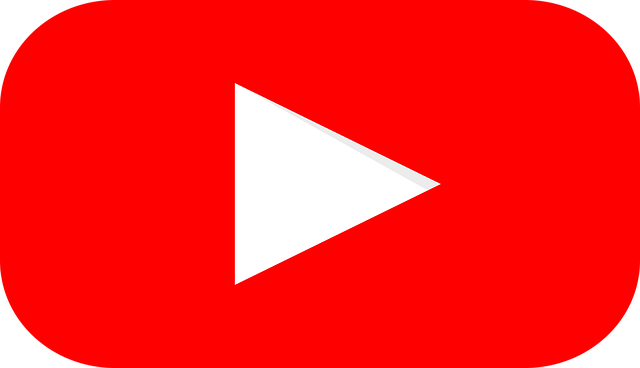Keynote: Satya Nadella
Good morning, folks! It’s time for a keynote and I’m excited. This girl had a lot of fun at the IM Charity Event last night and didn’t get out of control like some of the rest of you. [glares knowingly]
This isn’t my first time covering a keynote with Satya Nadella aka the Senior VP for Microsoft’s Search, Portal & Advertising Platform Group. Feel free to check out the previous Satya Nadella Keynote from SMX Advanced 2007 before checking out this one. Or not. It’s up to you. Apple juice is delicious.
It looks like we’re about to get started.
[ZOMG, someone needs to get control of the sound system before Michael Gray and I are blown out of the room. Why so loud, SES, why so loud? I swear we’re awake.]
Satya says good morning. Good morning, Satya! He offers us a brief bio: Before he joined search, he worked on enterprise systems, building CRM and ERP systems. In 1999 and 2000, he was associated with Link Exchange. He worked on the banner exchange and click trade. They were doing interesting things in search marketing early on. It’s been amazing to come back to the industry to see how far it’s gotten and how it’s matured.
He’s going to talk about how Microsoft thinks about the evolution of search and how Microsoft will shape those trends and how they’ll take advantage of them.
How should we think about the current state of search? The best way to categorize is to look at core search itself. Look at the business model and see how each part in the eco system comes together. Then, you have to look at the users and their needs. History is not a linear thing.
The first phase of search started with directories. It was built up by human taxonomies. It was about getting links into those taxonomies. The business model was based on impressions and paid inclusions. The participants were fairly passive. It wasn’t clear how they would participate in a marketplace that was driven through directories. With the end users, they wanted to navigate and browse. It was about finding information.
From there we went to the magic of keyword-based search and how simple it was. We learned about the tricks you could play with map and stats on top of that. It can do magical things in terms of giving you relevant results. That’s come a long way, even in the past 3 or 4 years. The business model has gone to cost-to-click.
The ROI that advertisers care about is still there in CPC, but the sophistication today is phenomenal. It’s amazing to see how quantitative these businesses have come. Publishers are still reacting but they’re hooked. Today, SEM is an art form and a science. The question is what’s next?
The end users are really interacting with all of this just using keywords. It’s the easiest thing to use. For an end user, they type in a couple of keywords and it allows them to talk to a search engine in a very simple way. That’s the state we’re in today and it’s a pretty good state.
The question now is will search change? Is there room for improvement? And if so, what are some of the pressure points that are going to cause this change?
Key trends he wants to talk about: User intent, Content and Context, and Advertising Efficiency.
User Intent:
As they look at their log data and analyze it, the interesting fact is that people aren’t just doing a single query and getting out of a search session. If you look at the time spent on search engines, the amount of time spent in long sessions is amazing. Most sessions are greater than 30 minutes. That’s a pretty revealing fact about what people are trying to get out on search engines.
People spend a lot of time on the engines and 50 percent of the time you’re starting with something you did before. There’s something going on here in terms of users really using search to accomplish a task. So the question is what are we going to do to help them with that task?
He shows a pie chart of what a user session looks like. They start with a set intent. They search, they go back, they modify their query, they check another site, they go back, they update their query, and they finally buy about 55 minutes later. That’s the type of query behavior we’re seeing in search engines. What are the experiences we build that can be more optimized for such behavior?
They’re trying to understand search patterns. They can’t prematurely try and slap some new experience in front of users before the intent has been fully expressed. But if it’s a 30 minute session, you’ll probably, at some point, have a better handle on what people are trying to do.
The notion of understanding user intent and user tasks will help them look at using ways to shape the search experience. It’s one of the most important behaviors for them to look at in the industry.
Content and Context:
Their index growth on images and video is phenomenal over the past year and a half. They’re growing into their index; it’s becoming more broad and deeper.
There’s context. Whenever we’re interacting with search we expect the search engines to understand more about time and location and current events. You want the engines to be smart about those things. The idea of having the rich index with all the content types and then having the rankings taking advantage and taken into account becomes a very important thing.
If you type in [opening ceremonies] on a search engine you get a broad set of results. But maybe you wanted to watch the video of the Olympic opening ceremonies before it was available on prime time that night. How do you get there? He compares Microsoft’s results for that query to Google. They’re pretty similar. How do you take something where the context is fairly rich and have the confidence in your ranking to be able to put that up? That’s one of the most important things they have to do.
Advertising Efficiency
Any time you reach a level of sophistication, you have to question whether you’ve really reached that frontier or if there’s room for more.
People are looking for inside information to correlate all their efforts. You’re going to see them invest a lot more in that area and open up some of the “black boxes” that go along with search engine systems.
If you put it all together what they’re looking at is the idea of having richer semantics that bind the user intent, the user content and their actions together. And then producing user experiences that aren’t one size fits all. That’s going to be the critical thing. That’s where they’re going to be focusing their innovation. In terms of the business model, CPC is fantastic and will remain. But there will be additional things they’ll add – CPAs and paid engagement (Live Search Cashback).
The idea of providing better and more end-to-end visibility is a place where you’ll see them investing a lot of their tools energy.
How do you get publishers more involved? H e looks at what Yahoo has done with Search Monkey and it’s very interesting. He’s looking at how you can do it and have it scale.
From an end user perspective, they go from doing queries in isolation to really accomplishing tasks. That’s some of the dimension of the evolution across the technology, the business model and the eco-system.
With that as a backdrop, what is Microsoft going to do? What are their investments?
The principles that drive them: Openness and transparency, broad advertising portfolio and platform and long term commitment.
They want to deliver the best results. That’s the thing they’ve made a lot of progress on, both in the size and depth of their index. It’s an arms race out there right now and they feel like they’re in it in a big way (aw, that’s cute. Wrong, but cute.). They think they’re helping others in the face, as well.
Their acquisition of Powerset fits with that. They think natural language search will be a critical way for them to improve relevancy. They want to simplify key tasks. They want to understand search patterns and then build experiences to fit those patterns. You can see that today in what they’ve done with video and image search.
He talks about their blended search results. If you type in [Michael Phelps] you get a comprehensive Instant Answer, then you get the official Web site, you get news and images, etc. This is the first thing they’re doing. They’re trying to increase the diversity of result and get good whole page relevance. What’s the best way to do it – both for users and for advertisers?
He talks about Powerset and the Wikipedia integration they have…cause everyone loves Wikipedia. Especially search marketers. Powerset analyzes all of Wikipedia and extracts its facts and puts them on the page. Yey, more Wikipedia!
He moves on to the FareCast acquisition that allows you to get search results for flights to make sure you’re getting the best fare. One of the cool things about FareCast is their predictive algorithm to tell you if you’re buying at the right time or not.
He ends talking about Cashback. Cashback bothers me. The end.
During the Q&A Kevin Ryan asks Satya about some of Microsoft’s recent acquisitions. He says that if you have access to large amounts of data that you could sell a company for 100x revenue. In that process, M made some acquisitions and you now own agencies. How do you find balance in managing that?
Satya says it’s an important point. He doesn’t believe the acquisition of aQuantive and Avenue A has changed how they operate. They have Avenue A running as an independent subsidiary. There is no flow of information that would bias anything that they do. That’s something they’ve paid a lot of attention to. The best way to balance it out is to think of them as third parties. That’s where they are.
Good stuff!
26,000+ professionals, marketers and SEOs read the Bruce Clay Blog
Subscribe now for free to get:
- Expert SEO insights from the "Father of SEO."
- Proven SEO strategies to optimize website performance.
- SEO advice to earn more website traffic, higher search ranking and increased revenue.

LEAVE A REPLY









